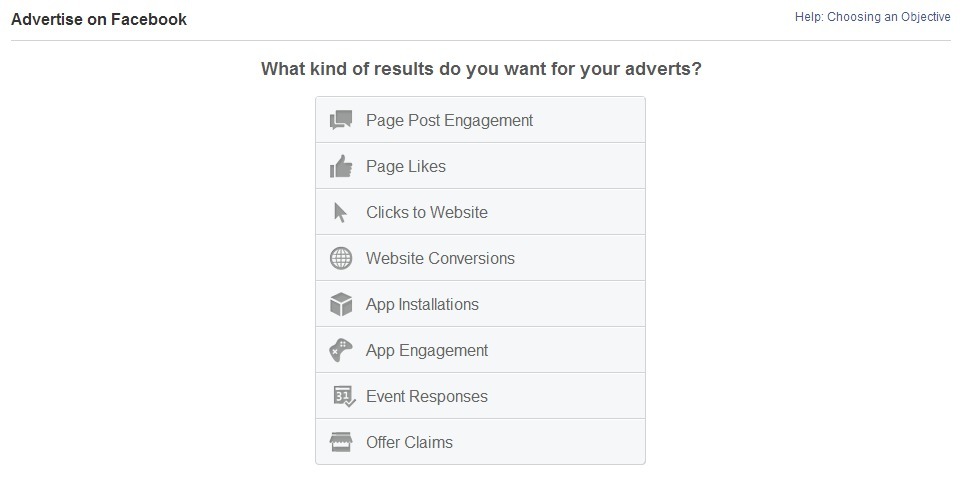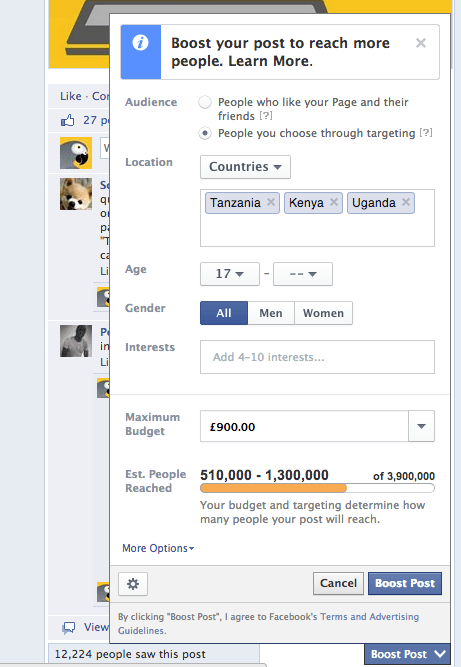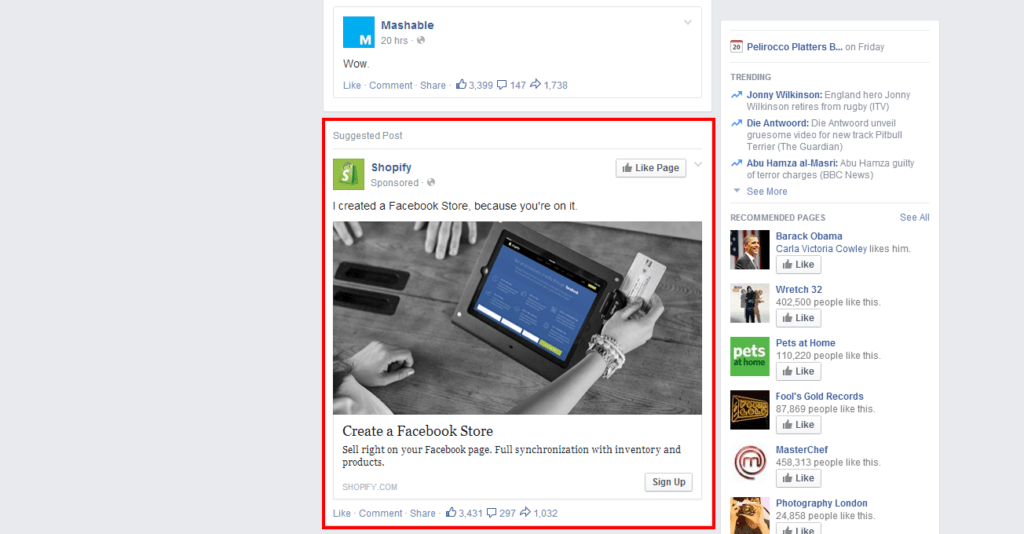

Following on from our introductory post in our Fundamentals of Digital Marketing series, in this blog we zoom in on social media and how to create a winning content strategy across multiple platforms for your business.
With so many networks available and hundreds of buzzwords floating about the social sphere (algorithm-this, native-advertising-that), it can be tough knowing how best to make your mark in a very noisy landscape.
So before you get started, or if you’re already ‘doing social’ but are not seeing the results you want, have a read through our winning social media game plan and arm yourself with the vitals to take it to the finish.

Before you do anything, have a think about where your audience is. There’s no point setting up a LinkedIn page if everyone’s on Facebook. Similarly, don’t expect Instagram to work for your brand in the same way as Facebook if your core objective is to drive website traffic.
"Choosing your channels is more than just setting up pages and pushing out ‘buy this’, ‘look at us’, ‘we did this’ updates."
You need to understand your audience and the digital spaces they hang out in, and then put yourself there and join in with conversations.
Here are our thoughts on the top seven channels you need to be on, as long as it’s relevant for your audience, of course!
The mighty king of social needs no introduction, so we’ll leave the stats out of this one. Use Facebook to increase brand exposure, for daily engagement and interaction, sharing photos, blog posts and other web content, offers and discounts, apps, competitions and incentives, and real-time customer service operations – all through a mix of paid and organic content.
Use Twitter to increase brand reach, engage in conversations and drive traffic to your website and other social channels, sharing blog posts, web content, news and offers etc. utilising hashtags, live Q&A’s, competitions and incentives. Set up listening tools to find conversations and join in to build brand exposure and increase responsiveness.
A great platform for bright, bold and inspirational image and video content, Instagram’s popularity is ever-increasing, with the platform taking the lead in growth over 2014 Q1.
Whilst the image and video-sharing platform is great for increasing brand awareness and reach, it’s not so good at driving traffic to your site as hyperlinks don’t work anywhere apart from the profile. Get round this by adding ‘link in profile’ to your ‘grams, but don’t expect an influx of traffic to your dedicated blog post if the main link in your profile is just to your site.
Another visual platform, Pinterest is the number one network for web traffic referrals as of March 2014, with 7.10% - that’s more than Twitter, LinkedIn and Reddit combined. 80% of total pins are repins, so make sure it’s your content getting repinned and make the most of the tools available to further optimise your images and encourage click-throughs.*
Google+ is more than just a social network – it’s a powerful social platform that’s integrated with YouTube, Gmail, Google Docs and Chrome and offers a host of search benefits for brands. The Google login is fast becoming our one-stop web identity – following us around integrating our browser preferences and making everything oh-so-convenient. Get your brand on Google+ pronto.
The second-biggest search engine has a lot to offer brands, if utilised effectively. Don’t go making videos if it’s not appropriate to your audience – and if you do, make sure they’re optimised and professionally shot, edited and shared across your networks.
We don’t need to tell you how much Google loves regularly updated content, or how valuable your customers will find relevant, interesting and engaging content that’s shared frequently via your social channels. Give your brand a voice and keep reminding your customers you exist.

As with any marketing strategy, digital or not, it’s absolutely vital that you set out your game plan from the outset.
What are your objectives and how will you measure them?
Who is your audience and where are their social hangouts?
How will you reach and engage these people?
There’s a fine balance between creating great content, marketing it well and nailing customer interaction on social media – get any of these elements wrong and your efforts will be wasted.
"Mix sales messages with fun, interactive campaigns. Be relevant, and interesting, and witty. Give your brand a voice and get talking."
Create a weekly content calendar and plan your updates across your social profiles – cross promote channels and share content across platforms to reach different audiences.
The more detail you put in your calendar the less time you’ll spend scrabbling around for ideas at the last minute. Sign up to Hootsuite or similar and schedule in some posts – but make sure you mix these with ‘live’ updates, and always remember what you’ve scheduled to avoid this happening.
Do not, under any circumstances, link social accounts to post one update out to each of them. There’s nothing worse than a Facebook page of tweets, or a Twitter feed of 140 character Facebook post cut-offs – if you can’t be bothered to put the effort into communicating with your audience, why should they bother to listen?
"Social media is for conversations. Make sure you’re having the right ones, in the right places, with the right people."
With Facebook updating its algorithm left right and centre, making it more difficult than ever for pages to reach fans organically, it’s more important than ever to allocate a budget to get your Facebook content seen.

What appears in your News Feed is no accident – it’s a carefully constructed product of Facebook’s algorithm, EdgeRank, which decides what is relevant to you, and (very) simplified, is based on five factors:
With literally thousands of other updates all competing for space in the News Feed, do your content a favour and give it a leg up to the top. Decide whether your objective is promoting an individual post to boost engagement and reach, getting people to Like your page, or driving clicks to your website.

Allocate a budget and set up your targeting to reach your core demographic and monitor closely to make sure it’s performing well. If something’s not working, change it. You can boost your posts quickly by using the ‘Boost Post’ button on every update, or use Adverts Manager or Power Editor to easily create and manage multiple sponsored posts, and utilise call-to-action buttons to maximise potential engagement.

Your sponsored post will then appear in News Feeds of those you have targeted, like the example below (which has been set up to drive page Likes on the Shopify page):

A healthy mix of organic and paid content should see you on your way to increasing social reach on Facebook, just remember to think properly about your objectives beforehand and pick the right type of advert and demographic to meet them.
Perhaps the most important thing to get right, but the one that’s often overlooked, is how to measure your success. There’s no point in doing all this if you can’t tell if it’s working.

What metrics will you use to measure the return on investment? Increased Likes or engagement? More web traffic to a dedicated campaign landing page or sales of a particular product? Email sign ups or web enquiries? Successful launch of a new product or service?
"Set out your objectives and metrics to measure ROI with at the start. That way, you’ll have targets to meet and benchmarks to work by and look back on to ascertain campaign effectiveness."
Make sure your social channels are integrated into your website and cross promoted on all possible outlets.
Monitor and adapt your adverts, content strategy, chosen platforms and future plans continuously. Keep an eye on latest updates and trends, and be the first to make the most of them, and most importantly, listen to your audience. If what you’re doing is working, great. If not, get in touch and we’ll see what we can do.
Got a question about your social media strategy? Tweet us, or email us at [email protected].



If you want to showcase your offering, convert more leads, provide resources, or all of the above, we can build a website that separates you from the competition.



